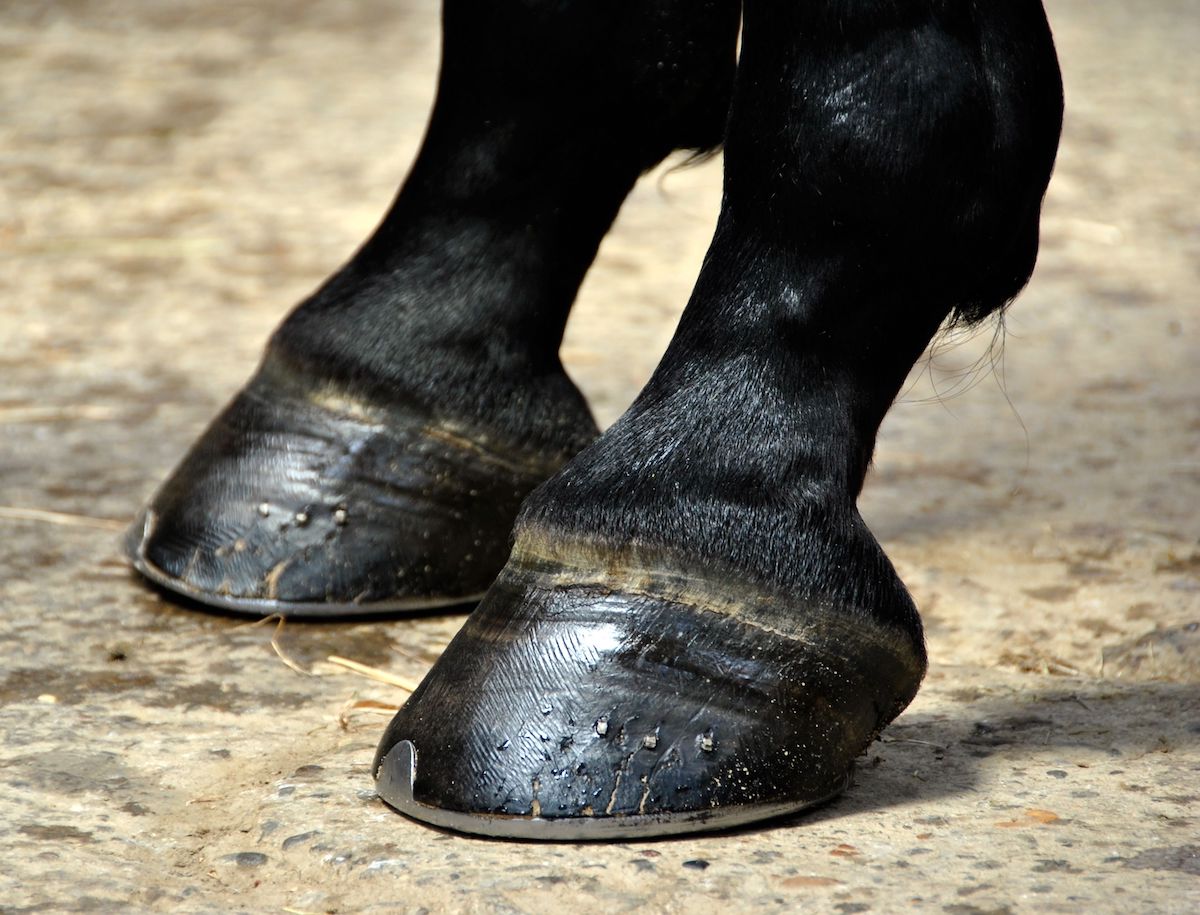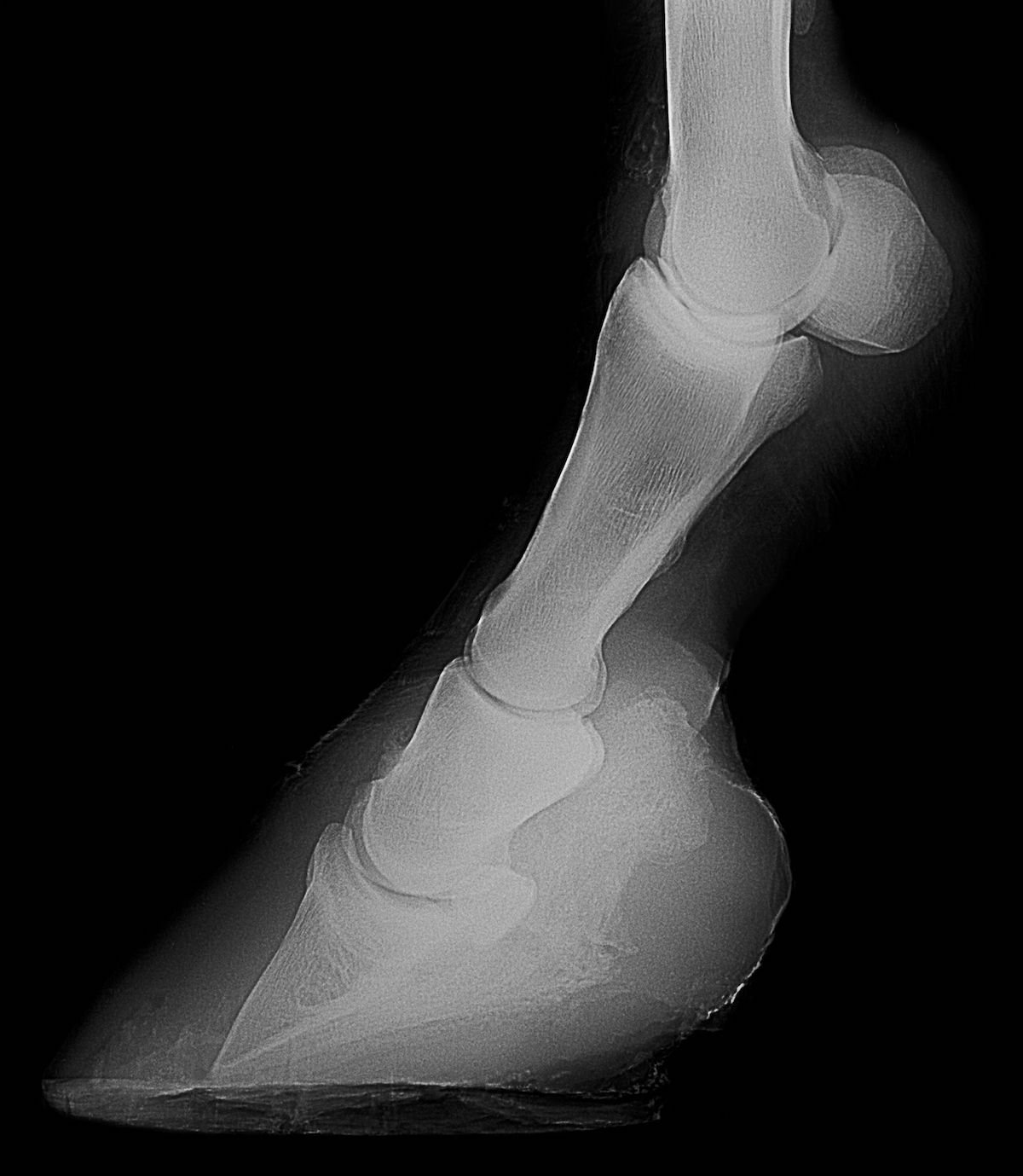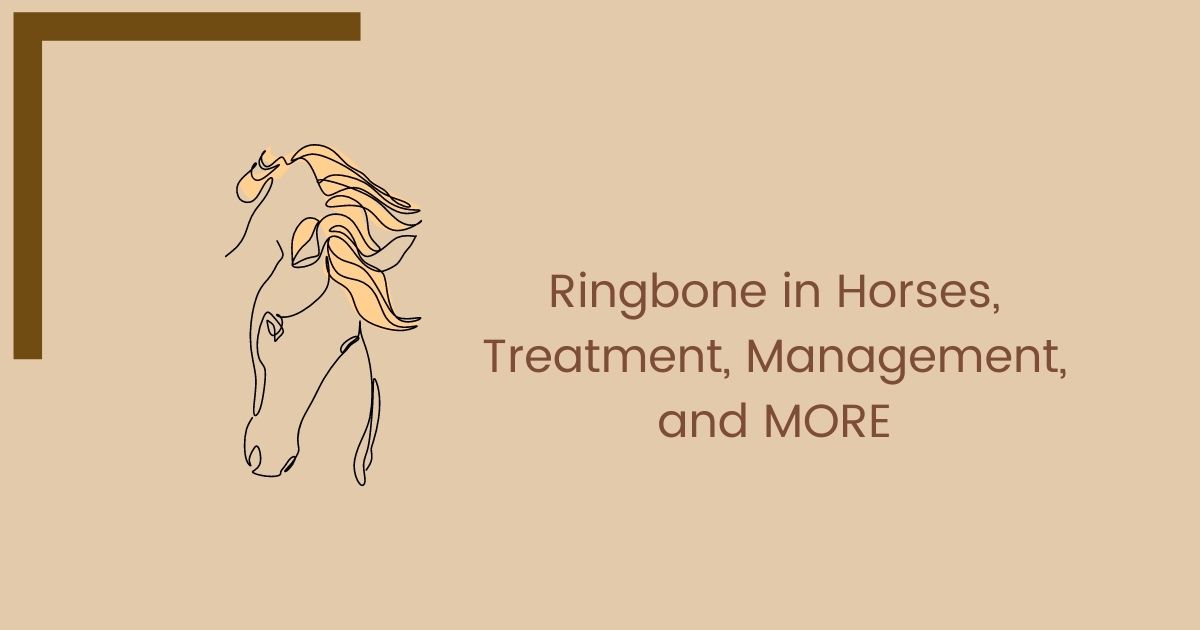What is Ringbone in Horses?
Ringbone in horses is the layman term for osteoarthritis in the pastern or coffin joint in horses – also called high and low ringbone. It can occur in multiple limbs or only one and is most often seen in the front limbs.
The condition gets its name from a bony buildup that eventually can occur over the joint. For example, a buildup stemming from an immune system on overdrive will first cause lameness but finally fuse the joint to relieve it! If you want to know more about ringbone, its causes, and more importantly, what you can do–Keep reading!
Are Certain Types of Horses Predisposed to Ringbone?
Any horse can develop ringbone. It is a progressive disease that can affect any breed and age, but some predisposing and contributing factors are:
Conformation
Conformation is the shape or structure of a horse, and it can significantly impact athletic ability and overall health. When evaluating a horse’s conformation, one should look at balance, muscles, and structural correctness. Structural correctness is the most critical part that can affect the ringbone condition.
A horse’s conformation can predispose them to arthritis. For example, suppose a horse has very upright pasterns, extreme valgus (deviating outward limb), or varus (turning inward) deformities. In that case, they will tend to collapse one side of the joint, leading to arthritis. The increased risk of developing arthritis will also increase the risk of ringbone.
Use
One of the most common causes, or predisposing factors, for ringbone is working young horses on surfaces that are too hard, as this will cause stress on the joints repeatedly. When working, horses that experience repetitive stress in the pastern region are also more likely to suffer from ringbone more frequently.
Repetitive stress on the pasterns can be caused by using the horse for jumping, barrel runs, or polo, amongst other activities. Practically, any horse who works hard is at risk of developing ringbone, but it doesn’t mean every single horse will.
Weight
As with all joint diseases, excessive weight can exacerbate these issues – including worsening ringbone. It is due to the extra weight pressing down on the joint, causing an increase in the pressure within it and worsening the daily wear and tear joints always experience.

The Two Different Types of Ringbone in Horses Unpacked
Ringbone is named after the bony overgrowth (also called exostosis) that can develop on and around the pastern bones due to arthritis. This overgrowth can either be inside the joint (articular) or on the side of the pastern bone, where the ligaments are. The overgrowth will eventually encircle the pastern – hence the “ring” part of the name in severe cases.
Generally, professionals distinguish between two types of ringbone. Low ringbone or high ringbone.
Low ringbone
Here, inflammation and overgrowth occur around the joint between the coffin bone and the short pastern bone, just over the top of the hoof wall. The low ringbone tends to be very painful as it affects a joint with a very high range of motion. In addition, there’s little space for any swelling to go, adding a lot of pressure on the joint – causing pain to the horse.
High ringbone
The high ringbone develops around the joint between the short pastern bone (Latin: Os Medialis phalanges) and the long pastern bone (Latin: Os Proximalis phalanges). High ringbone is the more common of the two types. This joint is more low-motion, but it carries a lot of loads – carrying the total weight of the horse with each stride, meaning it can also be harrowing for the horse.
What Causes Ringbone in Horses?
Ringbone is a degenerative joint disease. It can be caused by injuries in the pastern region, leading to cartilage damage or instability of ligaments and tendons. Or it can be due to chronic repetitive stress wearing down the joint – with this being the leading cause of arthritis (inflamed joints) in most horses.
When the pastern joint is put under repetitive stress and develops arthritis, the body will try to immobilize the joint to stop any instability and alleviate pain. The process of stabilizing the joint will cause a bony process to form around the joint – giving it the characteristic ringbone appearance.
If left unchecked, the bony process can eventually lead to a complete fusion of the two bones – and immobilization of the joint. The fusion of the joints is called ankylosis. Some horses may live very well with a joint like that, as the friction and inflammation are gone.
But, this process takes a very long time, and most horses will continue to show some degree of lameness.
Clinical Signs and Symptoms of Equine Ringbone
The most obvious sign of an equine ringbone is lameness. Lameness can, and will, occur in any horse that is experiencing joint pain. Lameness is often the first symptom an owner, trainer, or veterinarian will notice.
The next thing the owner will often notice is the distinctive raised “bumps” near the pastern joints. It does take a while before any signs are visible like this, meaning if you can see and feel the ridges and “bumps,” the case is already fairly advanced and should be seen by a veterinarian to ensure the horse isn’t experiencing unnecessary pain.
The Complexity of Diagnosing Ringbone in Equines
Many conditions out there can cause a horse to become lame, but locating the exact origin of the pain can be very difficult – meaning that early ringbone can be challenging to diagnose.
To pinpoint the exact cause of the pain, several diagnostic tests may be needed by a veterinarian. These will often include palpation and flexion of all the limbs and regional nerve blocks. Hereafter, x-rays can usually confirm the diagnosis. X-rays are, however, only helpful if arthritic changes have occurred.
If the condition is due to an acute injury, ultrasound, CT or MRI may be needed to confirm the diagnosis of ringbone.

Available Treatment Therapies in Combating Ringbone
Ringbone is a degenerative and irreversible condition, meaning it will get worse with time and cannot be cured. But that doesn’t mean a veterinarian can’t help your horse!
Management changes, supplements, and possibly painkillers from your veterinarian can all play a part in making sure your horse is feeling fit.
Management
Just as excessive weight is a predisposing factor, so it can be a worsening factor. Keeping your horse at a healthy weight is an essential part of avoiding unnecessary stress on arthritic joints. If you are often working your horse on a hard surface, a vet may also recommend you avoid doing so for the foreseeable future.
A farrier may also be able to alleviate some of your horse’s discomfort with different shoeing strategies that limit the weight the horse will put on its pastern joints. Farriers will, with additional shoeing, attempt to bring the hoof back to its correct conformation to avoid excessive stress on the joints.
Supplements
Some horses may benefit from supplements containing joint supporting substances like glucosamine or PGAG’s, and your veterinarian may even recommend the supplements administered as injections. To be given either in a muscle or directly into the joint. Read our article and find out why Pentosan is beneficial for osteoarthritis.
The research concerning the efficacy of the before mentioned supplements is limited, but, for some horses, it can be a great help with removing pain and better their gait.
Painkillers
If your horse is in significant pain, your veterinarian may recommend anti-inflammatory medication short-term to help the pain subside. Another option is that your veterinarian will suggest intra-articular (inside the joint) steroid injections to help limit the inflammation. But, every horse is unique and will need an individual treatment plan to help them precisely.
Fusion
If a horse with a ringbone is beyond where medication, management, or supplements can relieve it, surgery to fuse the pastern joints may be necessary – also called arthrodesis. The fusion is done to take away the pain when painkillers can no longer accomplish it.
The current gold standard (best mode of practice) is to use a bone plate and screws. The bones will then be connected at the plate and anchored on each bone by the screws. The healing process can take up to a year, but the bones will eventually grow together. Once the healing is complete, there’s no friction or irritation, and the pain will ease.
Fusion is, however, rarely recommended for low ringbone, involving the coffin joint. It is possible, but it is unlikely that these horses will return to work or have an athletic career.
Prognosis of Ringbone in Horses
In almost all cases of high ringbone, the two bones will eventually fuse. The horse will experience a drastic reduction of range of motion with this, but the pain should also go away. Until then, however, most horses with milder cases of ringbone can be improved dramatically just by changing their shoes! It is all down to the individual horse and its condition.
Early diagnosis and intervention give the horse the best chances of preserving its long-term health and, therefore, the best prognosis. So, if you notice even minor lameness in your horse, the best advice is to give your veterinarian a call.
How you use your horse also affects the prognosis significantly. For example, a horse that is only used for mild activity, like trail riding, is much more likely to return to work than a horse doing strenuous athletic work.
Can My Horse Continue Working After Being Diagnosed With Ringbone?
If the case of ringbone is still mild, a horse should be able to continue working. Still, it is vital to only work your horse after consulting a veterinarian to ensure it is not experiencing any unnecessary or excessive discomfort or pain.
Ringbone is, however, a degenerative disease, meaning it will get worse with time. Nevertheless, if a fusion of the joints becomes necessary, a horse may still return to some form of work – albeit with an altered gait.
Managing a horse with a ringbone can be hard work and complicated. But, with the many treatments and relieving options out there, your horse has a much better chance of remaining functional for many years after receiving a diagnosis of ringbone.
Our Top Shoeing and Trimming Techniques for Ringbone
As ringbone is degenerative, rest will not make it better, so it should still be allowed to exercise to keep healthy and happy and avoid weight gain. But, to use a horse with a ringbone, it might be very worth consulting a farrier about shoeing options for your horse.
New shoes won’t cure your horse, but ensuring the best possible conformation can slow the condition’s progression and alleviate a lot of discomforts the horse may be experiencing.
The hoof angle is critical to notice. A too upright or too low hoof angle can cause excessive stress on the horse. Here it is essential to add a shoe that promotes easy breakover (when the heel lifts off the ground). The breakover should be back toward the center of the hoof. The correct shoe can help ensure this.
The Final Straw
Ringbone is an uncomfortable condition, especially for the horse and the owners that care for their four-legged friends. Luckily, there are many more treatment options available for all stages of ringbone, meaning the diagnosis is no longer a sure sentence of retirement for all horses.
With the proper management, veterinary supervision, and the help of a good farrier, along with a dedicated owner, many horses can continue living happy and healthy lives for many years after receiving the diagnosis of ringbone!
